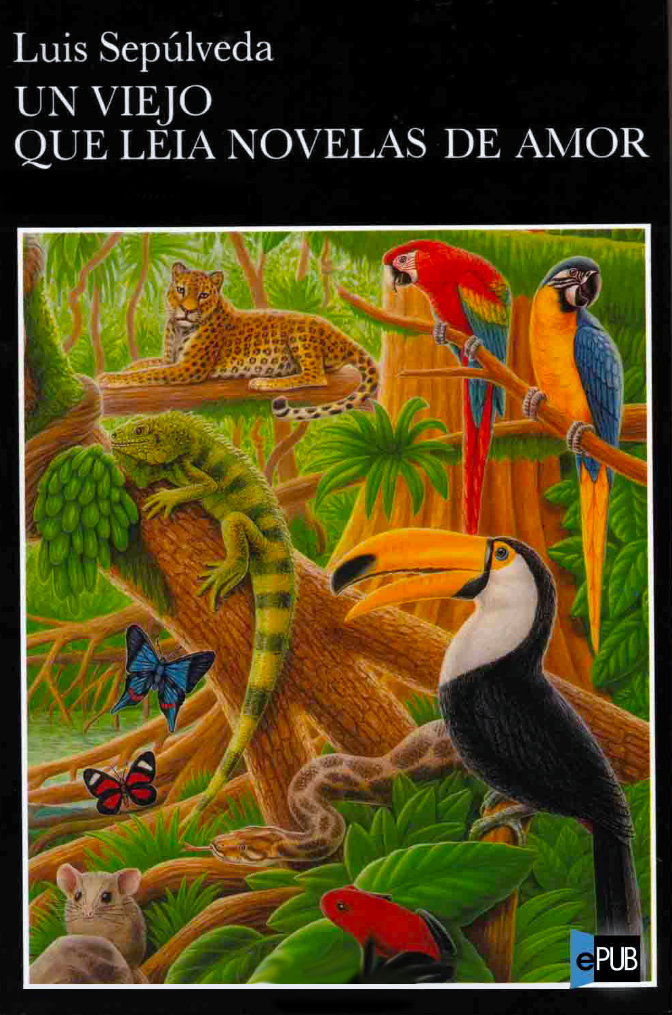
Después de haber leido una obra monumental como lo es Mundo Sin Fin del británico Ken Follett la casualidad hizo que comenzara a leer otra obra que es exactamente el opuesto en cuando a cantidad de páginas: El Viejo del Mar una de las mejores obras del autor de Por Quien Doblan las Campanas, Ernest Hemingway.
Sobre ambos libros les hablé en esta Comunidad haciendo una breve síntesis y un comentario sobre la trama.
Hoy voy a compartir con todos los #blurtters literarios de esta comunidad mis impresiones acerca de otra obra de pequeñas dimensiones en cuando a sus páginas (al igual que El Viejo y el Mar no supera las 150 páginas) por lo cual podría considerarse un libro "chico", de esos que -con un poco de "entusiasmo literario"- pueden leerse en dos o tres días, o más concretamente en un fin de semana.
Claro está, no por ser pequeño es una obra literaria menor. Un Viejo Que Leía Novelas de Amor, es a mi juicio, una de las mejores o tal vez la mejor obra del escritor chileno Luis Sepúlveda, emigrado durante la dictadura militar de Pinochet a Europa donde residió hasta su muerte -uno de los primeros fallecidos "ilustres" a causa del Covid-19- alternando su residencia entre Alemania y España y colaborando activamente con los grupos internacionales de Greenpace, entre otros.
Ambas obras, la de Hemingway y la de Sepúlveda, están unidas por el hilo conductor de la soledad y el medio ambiente que la rodea, girando alrededor de la figura de un hombre ya anciano en un entorno natural que en el caso del escritor estadounidense es el mar y en el caso del escritor chileno es la selva amazónica.
Del resto hay muchos puntos en comun entre ambos libros. La caza del hombre al animal como último recurso pero siempre en pleno respecto de las leyes de la naturaleza. Y el hombre luchando de igual a igual en un combate impredecible hasta el final.
No hay alegría en la victoria del hombre sobre el animal. Solo una amarga tristeza que, por imperio de las circunstancias, ha hecho necesaria tal acción. En un caso para sobrevivir (el pez espada), en el otro para protegerse de la furia asesina de la hembra del tigrillo a quien un irresponsable cazador ha exterminado todos sus cachorros por el simple placer de coleccionar algunos cueros.
Y en una cabaña perdida en el confín peruano-ecuatoriano-brasileño de la selva amazónica, un viejo que desde hace muchos años ha dejado la "civilización" de las sierras ecuatorianas para venir a vivir en la selva pasa su tiempo libre, cuando no caza para sobrevivir o captura serpientes para extraer y vender su veneno, leyendo novelas de amores desesperados pero con un final feliz que le trae dos veces al año su amigo dentista que llega a la aldea El Idilio para curar los dientes de sus pocos habitantes, en su mayoría colonos y b uscadores de oro.

La novela cuenta la historia de Antonio José Bolívar Proaño, (un nombre ilustre como le dicen sus amigos haciendo alusión al apellido del libertador sudamericano) al que se refiere simplemente como "el viejo", otra analogía con la novela de Hemingway.
Comienza contando su vida en la región del Amazonas ecuatoriano, en un par de hectáreas que le regaló el gobierno de su país para que las desboscara y se construyera su propia cabaña.
Toma contacto con los indios shuar, vive un tiempo con ellos y adopta sus usos y costumbre.
Vuelve atrás en el tiempo cuando vivía con su mujer (tan joven como él, incluso menor de edad) en las sierras ecuatorianas en casa de sus suegros. Cuando estos fallecen le dejen la casa en herencia, pero logran apenas a sobrevivir y a procurarse el sustento.
En ese contexto llegan a la conclusión su esposa (o él) son evidentemente estériles, ya que no pueden concebir hijos y eso para la mentalidad arcaica y conservadora de los otros aldeanos es un grave pecado.
Deciden así trasladarse a un rincón perdido del Amazonas donde, al menos, tienen una cabaña de propiedad donde cobijarse. Comida nunca les falta. Animales y frutos salvajes abundan. Aparte captura serpientes para extraerles el veneno y venderlo. Y también captura monos y hermosos pájaros de colores para venderlos en la más cercana ciudad que es El Dorado.
Pero las condiciones de vida no son fáciles. Las constantes lluvias, el peligro de contraer la malaria y otras fiebres provocadas por la picadura de mosquitos y otros insectos, hacen que su esposa no logre sobrevivir al segundo año de estadía.
Viudo y aislado de la civilización encuentra en los indios shuar verdaderos amigos con quien comparte amistad y conocimientos. Aprende a cazar, a pescar y a vivir en total autonomía.
En esas circunstancias conoce a un cura que, cada semestre, es enviado por la Iglesia a regularizar situaciones de concubinato y otras tareas espirituales. Mientras espera la llegada del barco que lo llevará de regreso a su ciudad el sacerdote pasa el tiempo leyendo la biografía de San Francisco de Asís.
El viejo (que no sabía de saber leer y lo había comprobado en oportunidad de las últimas elecciones) quería interesarse en la lectura, pero no sabía de qué género literario comenzar. Consultado el sacerdote le respondió que había muchísimos tipos de novelas y al enumerarle las principales el interés recayó sobre las novelas románticas, de amor.
Otro visitante ilustre a la aldea El Idilio (así se llamaba el lugar al borde del río Nangaritza) era el dentista que también cada seis meses instalaba una silla de dentista gigantesca en el embarcadero a pocos metros del barco que lo había traído y procedía a la extracción de dientes y a la venta de dentaduras.
El viejo había sido uno de sus primeros clientes y entre ambos había nacido algo parecido a una amistad. Era el propio dentista quien cada vez que venía le traía un par de libros de amor, de sufrimiento, pero con final feliz (ese era el requisito) con los cuales el viejo pasaba la mayor parte del tiempo, primero deletreando las palabras y luego leyendo más rápidamente. Con lugares y personajes que su mente no lograba ubicar en modo preciso, pero con una precisa idea de lo que era el bien y el mal. Leía 4-5 páginas en una tarde y luego se dedicaba a hacer vagar esos recuerdos que se referían a veces a ciudades como Florencia, Roma, París, Madrid, en un mundo, hasta ese momento, totalmente desconocido para él.
En una de esas tardes la calma de la aldea se ve alterada por un hallazgo macabro. En una canoa que se acerca a la orilla traída por el oleaje del río hay un hombre muerto y si bien el alcalde del lugar trata de acusar a los indios shuar del homicidio el viejo se encarga de demostrarles que quien ha causado esa muerte es una tigrillo hembra. Y se recuerda que tiempo cuando vivía con los indios shuar él mismo había matado al único cazador sobreviviente de una verdadera matanza de tigrillos, hembras, adultos y cachorros por el solo gusto de llevarse la piel.
Por ese motivo se había visto obligado a dejar la aldea shuar. Porque debería haberlo matado con la cerbatana como reza la tradición indígena para que el alma de los indios asesinados -también por los cazadores- descansara en paz.
La hembra del tigrillo sobreviviente trata de vengarse con todos los seres vivientes que encuentra a su paso: hombres, animales y de a poco pasa a representar un verdadero peligro.
Por este motivo el alcalde organiza una excursión llegando como guía principal al viejo, único verdadero conocedor de todos los secretos de la selva amazónica. Un anterior safari fotográfico con turistas estadounidenses a los cuales el viejo se había negado a acompañar terminó en un verdadero desastre, con uno de ellos muerto, atacado por centenares de pequeños monos, inofensivos a simple vista, pero letales cuando se reúnen en gran cantidad.
El alcalde, un personaje profundamente corrupto y venal, lo había amenazado con desalojarlo con la policia porque no tenía los papeles que confirmaran su propiedad. Ante esa disyuntiva el viejo decide, a su pesar, de acompañar la expedición en busca del tigrillo y el alcalde renuncia a cualquier tipo de reclamo sobre la propiedad del viejo.
Con un alcalde burócrata y totalmente desacostumbrado a andar en la selva, con la parsimonia y la sabiduría de Antonio Bolívar que conoce esa parte del Amazonas como la palma de su mano y un grupo de habitantes seleccionados que lo respeta se adentran en los misterios de una jungla que les reserva una sorpresa a cada paso.
Después de recorrer algunos kms llegan a la cabaña de un personaje apodado Alka-Seltzer por su manía de tomar esos analgésicos para el mal de estómago. Lo encuentran muerto, al igual que su compadre, con las señas del tigrillo. Se acampan y de noche sientan la bestia que merodea la cabaña olfateando todos los olores humanos.
Es demasiado para el alcalde y sus subordinados quienes deciden regresar no sin antes hacer una propuesta al viejo. Lo dejan solo y si regresa con el cuero del animal tendrá como recompensa cinco mil reales.
El viejo acepta no por la recompensa, sino para sacarse de encima un entero pelotón de personas que sirven solo para molestar, retardar los recorridos y causar más ruido del que se requiere en esas circunstancias.
Al día siguiente con una lluvia torrencial decide ir él mismo a buscar al tigrillo armado con su machete y la escopeta de dos caños. Lo ve en lo alto de una colina y ambos se observan. Luego el tigrillo desaparece. Así en un sinfín de oportunidades.
El viejo estudia su recorrido. Está por anochecer y sabe que en la oscuridad será presa fácil para el felino. Cuando ve que la bestia se aleja y se pierde de vista comienza a correr en dirección al río para buscar una protección mejor.
Lo que no cuenta es con la inteligencia del tigrillo que anticipa esa estrategia y lo ataca a mitad de camino. Pero no para matarlo, sino simplemente para señalarle el lugar en su pareja, el macho, está gravemente herido en una pata con la infeccion ya avanzada, producto del disparo de un cazador. La hembra lo mira a menos de cinco metros como indicándole que acabe con los sufrimientos de su compañero.
El viejo con un nudo en la garganta se acerca al macho y le dispara matándolo. La hembra se aleja y Antonio Bolivar regresa caminando hasta el borde del río donde encuentra una canoa de grandes dimensiones dada vuelta. Se mete dentro para protegerse de la lluvia.
Sin embargo a medianoche siente de nuevo el tigrillo merodeando y entiende que ahora la lucha será sin cuartel entre ambos.
Apenas se alza la luz del alba sale de su escondite escopeta en mano y ve al felino a pocos metros de distancia. El tiempo para llevarse la escopeta a la altura de la cara, tomar la mira y disparar en el preciso instante en que el tigrillo haciendo un salto prodigioso vuela por el aire con las garras que buscan su garganta.
La lluvia de perdigones lo alcanza cuando está muy cerca de golpear a su adversario y cae muerto a sus pies.
Con lágrimas en los ojos, nudo en la garganta y muchísima ternura el viejo lo empuja hasta el río para que la corriente se lo lleve, pensando con rencor a esos malditos cazadores que están arruinando su amado Amazonas.
Corta con el machete una gruesa rama y apoyándose con ella a modo de bastón emprende el regreso rumbo a El Idilio.

Es difícil no emocionarse con el relato de Sepúlveda. En el preciso momento en que su libro era premiado en Burgos (España) Chico Mendes su amigo y defensor del medio ambiente y de su Amazonas natal era asesinado por un grupo de hombres armados.
Mendes se había transformado con sus denuncias en un elemento peligroso para todos aquellos que estaban (y están aún) haciendo del Amazonas un verdadero y propio negocio, a la vez que una tragedia ambiental.
Los verdaderos responsables nunca fueron encontrados y ninguna persona de relieve fue llevado a juicio.
El libro mismo es una denuncia contra cazadores furtivos y la tala indiscriminada que se está haciendo en el mayor pulmón verde del planeta.
Y es difícil no emocionarse con la genuina sinceridad de esa persona que libra su propia lucha en medio del inmenso verde del mayor humedal del mundo. Y pasa su tiempo libre leyendo novelas de amor haciendo vagar su imaginación más allá de los confines de sus propios conocimientos.
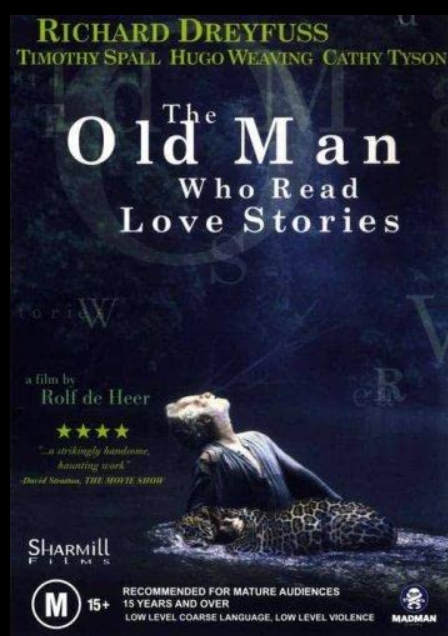 | 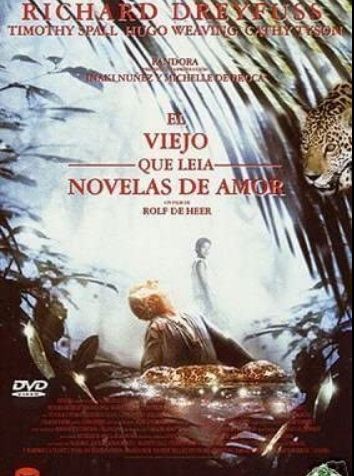 |
|---|
After having read a monumental work such as World Without End by the British Ken Follett, chance made me start reading another work that is exactly the opposite in terms of number of pages: The Old Man of the Sea, one of the best works of the author of For Whom the Bell Tolls, Ernest Hemingway.
About both books I spoke to you in this Community making a brief summary and a comment on the plot.
Today I am going to share with all the literary #hivers of #Hive Book Club my impressions about another work of small dimensions in terms of its pages (like The Old Man and the Sea, it does not exceed 150 pages) for which it could be considered a "small" book, one of those that -with a little "literary enthusiasm"- can be read in two or three days, or more specifically in a weekend.
Of course, not because it is small it is a minor literary work. An Old Man Who Read Novels of Love, is in my opinion, one of the best or perhaps the best work of the Chilean writer Luis Sepúlveda, emigrated during the military dictatorship of Pinochet to Europe where he lived until his death - one of the first deceased " illustrious" due to Covid-19- alternating their residence between Germany and Spain and actively collaborating with the international groups of Greenpace, among others.
Both works, Hemingway's and Sepúlveda's, are linked by the common thread of loneliness and the environment that surrounds it, revolving around the figure of an old man in a natural environment that in the case of the American writer is the sea and in the case of the Chilean writer it is the Amazon jungle.
Of the rest there are many points in common between both books. Man hunting the animal as a last resort but always in full respect of the laws of nature. And the man fighting as equals in an unpredictable combat until the end.
There is no joy in the victory of man over animal. Just a bitter sadness that, due to circumstances, has made such an action necessary. In one case to survive (the swordfish), in the other to protect himself from the murderous fury of the female margay, whom an irresponsible hunter has exterminated all her cubs for the simple pleasure of collecting some hides.
And in a lost cabin on the Peruvian-Ecuadorian-Brazilian border of the Amazon jungle, an old man who for many years has left the "civilization" of the Ecuadorian mountains to come to live in the jungle spends his free time, when he is not hunting to survive or capture snakes to extract and sell their poison, reading novels of desperate love but with a happy ending that his dentist friend brings him twice a year, who comes to the village of El Idilio to cure the teeth of its few inhabitants, in his mostly settlers and gold prospectors.

The novel tells the story of Antonio José Bolívar Proaño, (an illustrious name as his friends call him, alluding to the surname of the South American liberator) who is simply referred to as "the old man", another analogy with Hemingway's novel.
He begins by recounting his life in the Ecuadorian Amazon region, in a couple of hectares that the government of his country gave him so that he could clear them and build his own cabin.
He makes contact with the Shuar Indians, lives with them for a time and adopts their uses and customs.
He goes back in time when he lived with his wife (as young as he is, even a minor) in the Ecuadorian mountains at the house of his in-laws. When they die, they leave the house as an inheritance, but they barely manage to survive and provide for themselves.
In this context they come to the conclusion that his (or his) wife is obviously sterile, since they cannot conceive children and that for the archaic and conservative mentality of the other villagers is a grave sin.
They thus decide to move to a lost corner of the Amazon where, at least, they have a private cabin where they can shelter. Food is never lacking. Wild animals and fruits abound. He apart captures snakes to extract the poison and sell it. And he also captures monkeys and beautiful colored birds to sell them in the nearest city, El Dorado.
But living conditions are not easy. The constant rains, the danger of contracting malaria and other fevers caused by the bite of mosquitoes and other insects mean that his wife cannot survive the second year of their stay.
Widowed and isolated from civilization, he finds in the Shuar Indians true friends with whom he shares friendship and knowledge. He learns to hunt, to fish and to live in total autonomy.
In these circumstances he meets a priest who, every semester, is sent by the Church to regularize concubinage situations and other spiritual tasks. While he awaits the arrival of the ship that will take him back to his city, the priest spends his time reading the biography of Saint Francis of Assisi.
The old man (who did not know how to read and had proven it during the last elections) wanted to be interested in reading, but he did not know what literary genre to start with. When consulted, the priest replied that there were many types of novels and when listing the main ones, his interest fell on romantic novels, about love.
Another illustrious visitor to the village of El Idilio (as the place on the banks of the Nangaritza River was called) was the dentist who also installed a gigantic dentist's chair every six months on the pier a few meters from the boat that had brought him and proceeded to extraction of teeth and sale of dentures.
The old man had been one of his first clients and something like a friendship had been born between the two. It was the dentist himself who, every time he came, brought him a couple of books about love, about suffering, but with a happy ending (that was the requirement) with which the old man spent most of his time, first spelling the words and then reading more quickly. With places and characters that his mind could not place precisely, but with a precise idea of what was good and evil. He read 4-5 pages in an afternoon and then dedicated himself to making those memories wander that sometimes referred to cities like Florence, Rome, Paris, Madrid, in a world, until that moment, totally unknown to him.
On one of those afternoons, the calm of the village is altered by a macabre discovery. In a canoe that approaches the shore brought by the waves of the river there is a dead man and although the mayor of the place tries to accuse the Shuar Indians of the murder, the old man is in charge of showing them that the one who has caused that death is an tigrillo female. And it is remembered that time when he lived with the Shuar Indians he himself had killed the only surviving hunter of a true slaughter of ocelots, females, adults and cubs for the sole pleasure of taking the skin.
For that reason he had been forced to leave the Shuar village. Because he should have killed him with the blowgun as the indigenous tradition prays so that the soul of the murdered Indians - also by the hunters - rest in peace.
The female of the surviving tigrillo tries to take revenge on all the living beings that she finds in her path: men, animals and little by little she becomes a real danger.
For this reason, the mayor organizes an excursion arriving as the main guide to the old man, the only true connoisseur of all the secrets of the Amazon jungle. A previous photographic safari with American tourists whom the old man had refused to accompany ended in disaster, with one of them dead, attacked by hundreds of small monkeys, harmless to the naked eye, but deadly when they gather in large numbers.
The mayor, a deeply corrupt and venal character, had threatened to evict him with the police because he did not have the papers confirming his ownership. Faced with this dilemma, the old man decides, in spite of himself, to accompany the expedition in search of the tigrillo and the mayor renounces any type of claim on the old man's property.
With a bureaucratic mayor totally unaccustomed to walking in the jungle, with the parsimony and wisdom of Antonio Bolívar, who knows that part of the Amazon like the back of his hand, and a selected group of inhabitants who respect him, they delve into the mysteries of a jungle that reserves a surprise for them at every turn.
After traveling a few kms, they arrive at the cabin of a character nicknamed Alka-Seltzer for his habit of taking those painkillers for an upset stomach. They find him dead, like his compadre, with the signs of the tigrillo. They camp and at night feel the beast that prowls the cabin sniffing out all human scents.
It is too much for the mayor and his subordinates who decide to return but not before making a proposal to the old man. They leave him alone and if he returns with the skin of the animal he will have five thousand reais as a reward.
The old man accepts not for the reward, but to get rid of a whole platoon of people who serve only to annoy, delay the tours and cause more noise than is required in those circumstances.
The next day with a torrential rain he decides to go himself to look for the margay armed with his machete and the double-barreled shotgun. He sees him on top of a hill and they both look at each other. Then the tigrillo disappears. So in endless opportunities.
The old man studies his route. He is about to get dark and he knows that in the dark he will be easy prey for the feline. When he sees the beast move away and out of sight, he begins to run towards the river to seek better protection.
What it does not count on is the intelligence of the ocelot that anticipates this strategy and attacks it midway. But not to kill him, but simply to point out the place in his partner, the male, is seriously injured in one leg with the infection already advanced, the product of a hunter's shot. The female looks at him from less than five meters away as if telling him to put an end to the suffering of her partner.
The old man with a lump in his throat approaches the male and shoots him, killing him. The female walks away and Antonio Bolivar walks back to the edge of the river where he finds a large overturned canoe. He goes inside to protect himself from the rain.
However, at midnight he feels the margay prowling again and understands that now the fight will be without quarter between the two.
As soon as the light of dawn rises he comes out of his hiding place, shotgun in hand and sees the feline a few meters away. The time to bring the shotgun up to the face, take the sights and shoot at the precise moment that the tigrillo, making a prodigious jump, flies through the air with its claws looking for his throat.
The rain of pellets reaches him when he is very close to hitting his opponent and he falls dead at his feet.
With tears in his eyes, a lump in his throat and a lot of tenderness, the old man pushes him to the river so that the current can take him away, thinking with resentment of those damned hunters who are ruining his beloved Amazon.
He cuts a thick branch with his machete and, leaning on it as a cane, starts his way back towards El Idilio.

It's hard not to be moved by Sepúlveda's account. At the precise moment in which his book was awarded in Burgos (Spain), Chico Mendes, his friend and defender of the environment and of his native Amazon, was assassinated by a group of armed men.
Mendes had become, with his denunciations, a dangerous element for all those who were (and still are) making the Amazon a true and proper business, as well as an environmental tragedy.
The real culprits were never found and no notable person was brought to trial.
The book itself is a complaint against poachers and the indiscriminate logging that is being done in the largest green lung on the planet.
And it's hard not to be moved by the genuine sincerity of that person who wages his own struggle in the midst of the immense green of the world's largest wetland. And he spends his spare time reading romance novels, letting his imagination wander beyond the confines of his own knowledge.
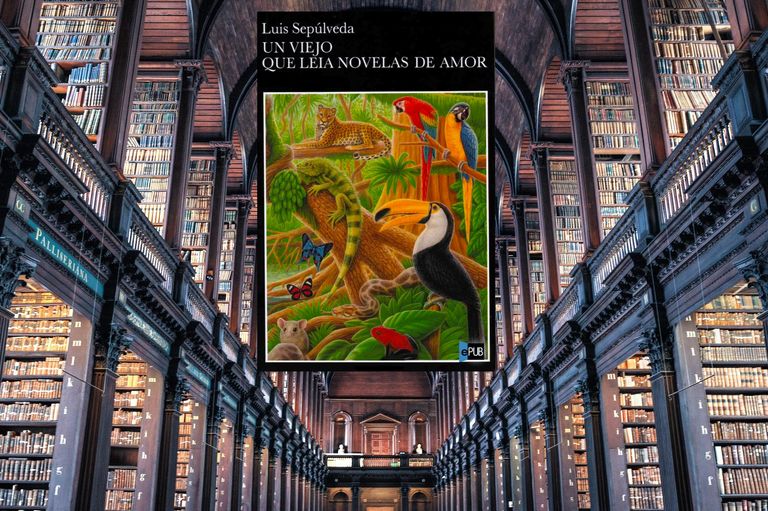
Traducido con / Translated with www.DeepL.com/Translator (free version)
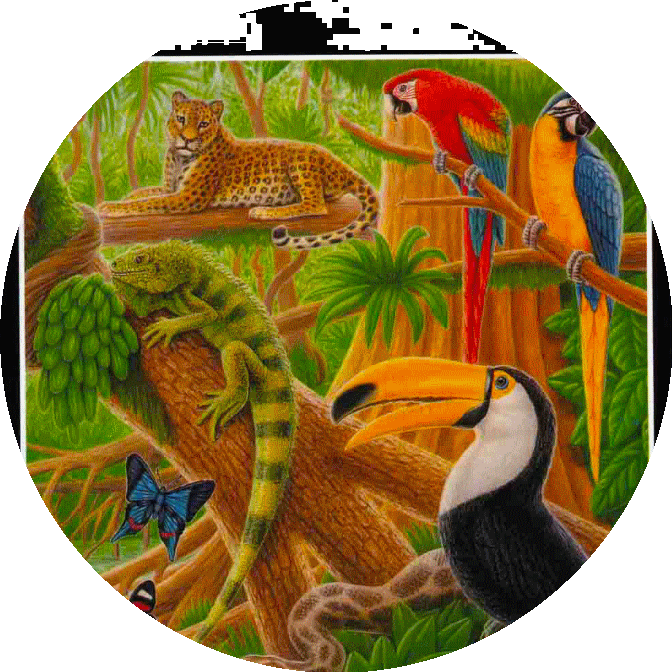



Sources consulted (my property) for the preparation of this article. Some paragraphs may be reproduced textually.
Fuentes consultadas (de mi propiedad) para la elaboración del presente artículo. Algunos párrafos pueden estar reproducidos textualmente.
| Argentina Discovery. |  |
|---|---|
| Galería Fotográfica de Argentina. |  |
| Viaggio in Argentina. |  |
| Rasetipi. |  |